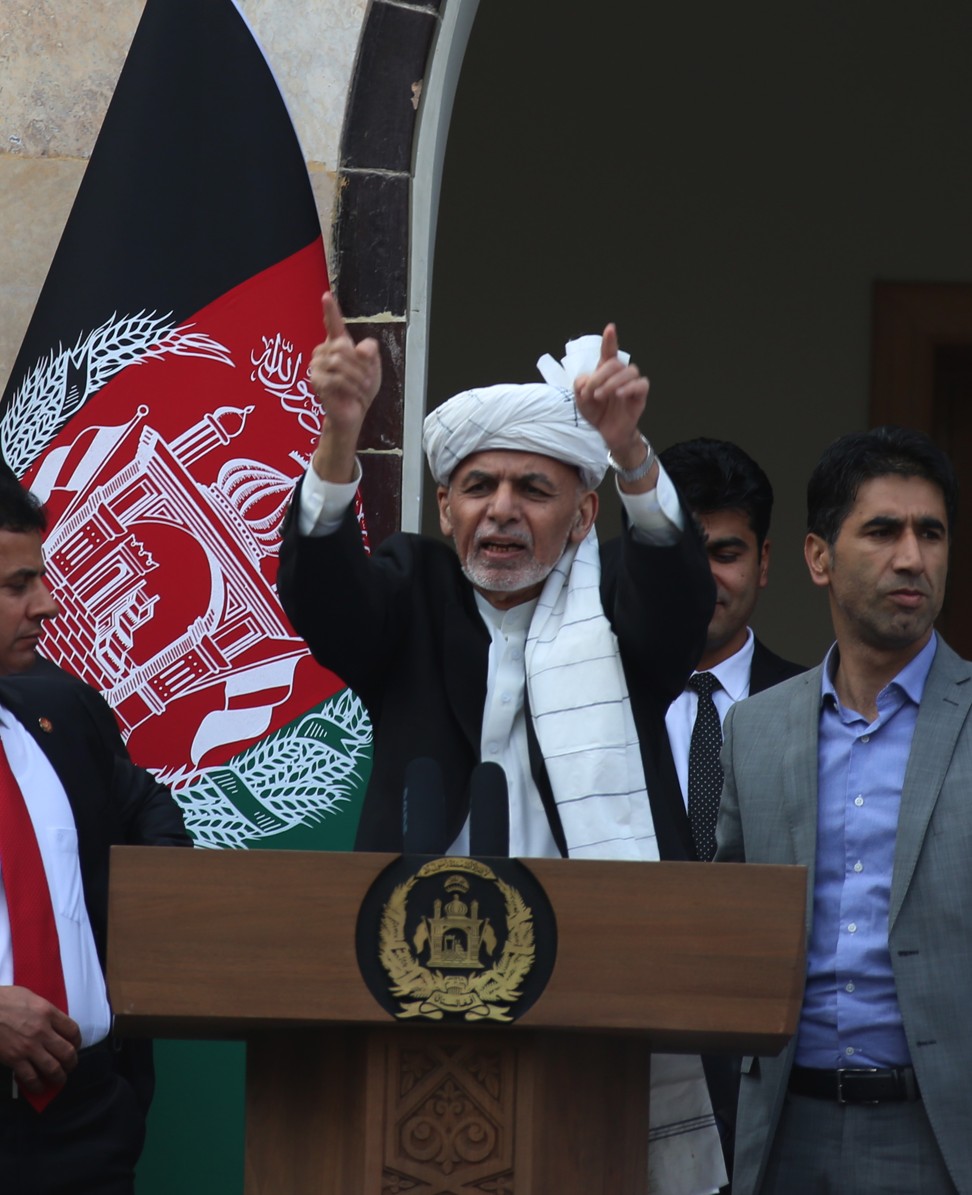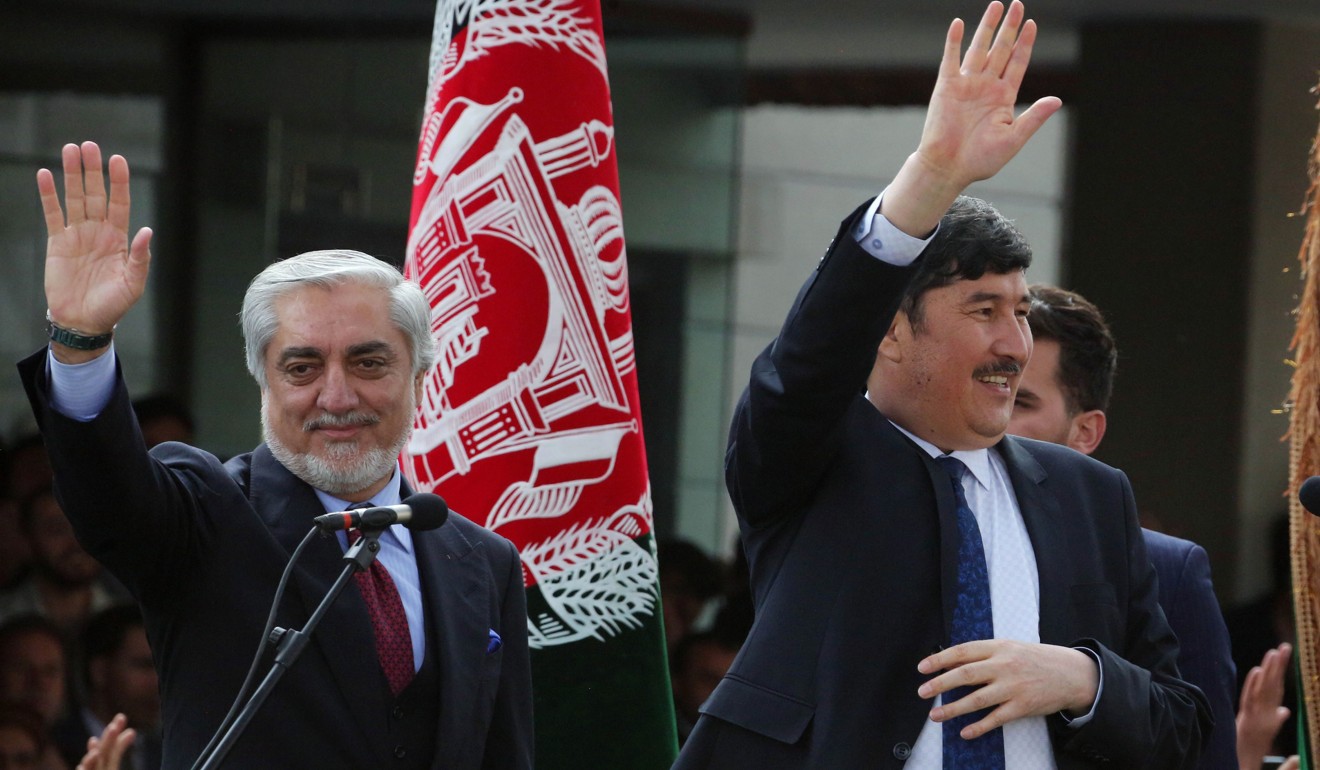
US begins troop withdrawal amid political chaos in Afghanistan
- The US goal is to bring the numbers down to 8,600, from somewhere north of 12,000 troops, over 135 days
- Tensions mount as rival leaders Ashraf Ghani and Abdullah Abdullah are both sworn in as president at competing ceremonies
American troops have begun leaving Afghanistan for the initial troop withdrawal required in the US-Taliban peace agreement, a US official said, amid political chaos in Kabul that threatens the deal.
Hundreds of troops are heading out of the country as previously planned, but they will not be replaced as the US moves ahead with plans to cut the number of forces in the country from about 13,000 to 8,600, the official said.
The official spoke on the condition of anonymity to discuss the movement ahead of a public announcement.
The pull-out comes as Afghanistan’s rival leaders were each sworn in as president in separate ceremonies on Monday, creating a complication for the United States as it figures out how to move forward on the deal and end the 18-year war.
The sharpening dispute between President Ashraf Ghani, who was declared the winner of last September’s election, and his rival Abdullah Abdullah, who charged fraud in the vote along with the elections complaints commission, threatens to wreck the next key steps and even risks devolving into new violence.
The US has not tied the withdrawal to political stability in Afghanistan or any specific outcome from the all-Afghan peace talks. Instead, it depends on the Taliban meeting its commitment to prevent “any group or individual, including al-Qaeda, from using the soil of Afghanistan to threaten the security of the United States and its allies”.

US Defence Secretary Mark Esper said on March 2 that he had already approved the start of the withdrawal, which would then be coordinated by military commanders in Afghanistan.
The US official said that the troops leaving now had been scheduled to depart, but they will not be replaced. Esper has said General Scott Miller, the US commander in Kabul, will pause the withdrawal and assess conditions once the troop level goes down to 8,600.
The long-term plan is for the US to remove all troops within 14 months if security conditions are met.
The agreement with the Taliban followed a seven-day “reduction in violence” period that, from the Trump administration’s viewpoint, was meant to test the Taliban’s seriousness about moving toward a final peace agreement.

The US meanwhile has urge unity in Kabul ahead of negotiations with the Taliban.
“We strongly oppose any action to establish a parallel government, and any use of force to resolve political differences,” Secretary of State Mike Pompeo said in a statement, without explicitly naming Abdullah.
“Prioritising an inclusive government and unified Afghanistan is paramount for the future of the country and particularly for the cause of peace,” he said.
Pompeo nonetheless said he welcomed statements by both Abdullah and President Ghani showing a commitment to a peace process with the Taliban.
At least 27 killed in attack on Afghan political rally days after Taliban deal
Trump’s administration has shown thin patience with the bickering leaders in Kabul. The United States has not congratulated Ghani or commented on the election results, but in Monday’s statement referred to him as “President Ghani”.
Even as Ghani was winding up his thank you speech, blasts of rocket fire were heard hitting near the presidential palace.
In a sign of international support for Ghani, his ceremony – aired on state TV – was attended by Washington’s peace envoy Zalmay Khalilzad, US General Miller, as well as a number of foreign dignitaries including the US embassy’s charge d’affaires and Tadamichi Yamamoto, the UN Secretary General’s personal representative to Afghanistan.
At Abdullah’s inauguration, aired on private Tolo TV, among those present were so called “jihadi’ commanders, who participated in the brutal civil war of the 1990s and were among those who allied with the US-led coalition to topple the Taliban in 2001.
US launches air strike against Taliban hours after Donald Trump call
Both candidates – but particularly Abdullah – are backed by warlords with heavily armed militias, underscoring fears they could use force to back their candidate.
The rival claims to be president have the potential to further split and weaken Afghanistan’s fragile institutions, including the military, if they demand their authority be recognised.
The duelling inaugurations took place despite last-minute shuttle diplomacy by Khalilzad, who reportedly went back and forth between the two Afghan rivals into the early hours Monday.
Taliban spokesman Zabihullah Mujahed said late Sunday that the Taliban were still committed to the peace deal, but said the duelling presidential inaugurations “are not good for the Afghan nation”.
Additional reporting by Agence France-Presse

